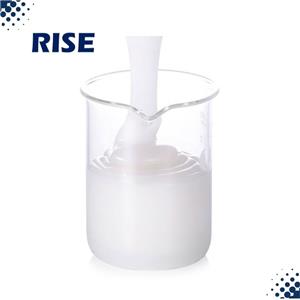Defoamer use in the process of many difficult problems, how to easily crack?
In the industrial production process, the generation of foam will often adversely affect the production efficiency and product quality, the main function of the defoamer is to eliminate and control the foam in the liquid to ensure the stability of the production process and product quality. Therefore, the application of defoamer antifoam is particularly important. In practice, the use of defoamer will encounter a series of problems. In this article, we will discuss several common problems in the use of defoamers and their solutions to help you better understand and apply this important industrial additives.
1. PROBLEMS WITH DEFOAMER BECOMING CLOUDY
The main components of defoamer antifoam include hydrophobic particles, silicone oils and emulsifiers. These components play a vital role in the defoaming process. Silicone oil, as an antifoaming medium, has a very low surface tension and is neither oleophilic nor hydrophilic, and is able to displace the oil and water phases in the middle of the foam wall, thus producing an antifoaming effect. When the silicone oil outside the hydrophobic particles is completely consumed, the foam system may appear cloudy.
Solution: The performance difference of defoamer antifoam mainly stems from the different dosage and color formation of their ingredients. A high quality defoamer should have excellent defoaming effect and long foam inhibition time to avoid turbidity in the system.
2. DEFOAMER BLEACHING OIL PROBLEM
The uniformity of dispersion of the defoamer antifoam in the system has a critical impact on its performance. When the defoamer antifoam is evenly dispersed, it has less effect on the transparency of the system and can be maintained in the system for a longer time. If the defoamer is not evenly dispersed in the system, the time for agglomeration into larger particles will become shorter, resulting in turbidity and oil bleaching.
To avoid oil bleaching, the defoamer can be moved forward in the order of addition or diluted before it is added to the system, the diluent can be water or a surfactant in the system.

3. DEFOAMER FOAM INHIBITION TIME
The foam inhibition time of defoamer is mainly determined by the nature of silicone oil. Silicone oil content directly affects the consumption cycle of defoamer antifoam in use. If too little silicone oil is added, the defoaming performance may not meet the requirements; if too much is added, it may affect the performance of the defoamer antifoam and reduce its defoaming property. The particle size and mixing time of the defoamer are also important indicators that affect the ability of foam suppression.
Solution: In order to obtain the ideal foam inhibition effect, it is necessary to strictly control the addition of silicone oil, the particle size of defoamer and mixing time.
4. DEFOAMER FAILURE PROBLEM
The acid and alkali stability and solubility of defoamer antifoam have an important impact on their performance. If the defoamer antifoam has poor acid and alkali resistance, the silicone oil may decompose, resulting in reduced defoaming ability or even failure. Certain chemical components may make the silicone oil dissolve into the system, so that the defoamer loses its antifoaming effect.
Solution: Silicate can be added to the system to inhibit the decomposition of silicone oil, and defoamer with excellent acid and alkali stability and solubility need to be selected.
5. COMPATIBILITY OF DEFOAMER
Different defoamer antifoam may be suitable for different systems and conditions. If not selected properly, they may react with other components in the system, resulting in reduced performance or failure.
Solution: Adequate compatibility testing should be conducted before use to ensure that the defoamer antifoam is compatible with other components in the system.
6. DISPERSIBILITY AND STABILITY OF DEFOAMER
The dispersion and stability of defoamer antifoam directly affect its performance. If the dispersion is uneven, it may lead to poor local antifoaming effect; while insufficient stability may lead to a gradual decrease in antifoaming performance over time.
Solution: Select defoamer antifoam with excellent dispersibility and stability to ensure its uniform dispersion and long-term stability in the system.





